Hicatee Turtle Confiscations Help Stock the HCRC
The new Hicatee Conservation Research Center (HCRC) in Belize is now open for business, which is a good thing for eight Central American River turtles, or Hicatee, Dermatemys mawii, that were confiscated recently. Spearheaded by the Turtle Survival Alliance (TSA) and created in partnership with the Belize Foundation for Research and Environmental Education (BFREE), the HCRC is a unique facility located in a private protected area at the foothills of the Maya Mountains.
TSA and BFREE already had a team on the ground in Belize when we learned that the Fisheries Department, acting on a tip, had pursued a group of Hicatee hunters in an area near Sandhill called Grace Bank, Belize District. The pursuit by canoe lasted over three hours and resulted in the officers’ discovery of ten nets set across the creek for trapping Hicatee, an illegal practice that fortunately led to the poacher’s camp. Though armed, two men were arrested without incident on 26 March and arraigned the following day in court and charged accordingly (See Belize news).
[and by Rick Hudson of the TSA]
Eight turtles were found in bags including an oversize female with a carapace length of 18.3 inches, 3 under-sized females with carapace lengths of less than 14 inches, 2 legal-sized females with carapace lengths of 16 inches, and 2 adult males each with a carapace length of 16 inches. Violations included exceeding the allowable number of turtles (3), using nets to trap turtles, and taking turtles outside the allowable size limits of 15.2 – 17.2 inches carapace length. More restrictive regulations for collecting Hicatee in Belize were proposed in 2012 but have not yet gone into effect.
On Thursday, 27 March, a news report on the radio notified the public of the arrest and reminded them of the laws pertaining to harvesting Hicatee from the wild. Upon learning that an arrest had been made, our team called Fisheries and requested that the turtles be transferred to BFREE for the breeding program. The following day, 28 March, permission was granted and Jacob Marlin, Executive Director of BFREE, picked up the turtles from Fisheries headquarters in Belize City. There are now 22 Hicatee residing at the HCRC.
Since arriving at the Center, the new turtles have settled in well and begun feeding on local figs and Paspalum, an emergent aquatic grass that has been found to comprise the majority of their wild diet by volume, and is being cultivated at BFREE as a food source.
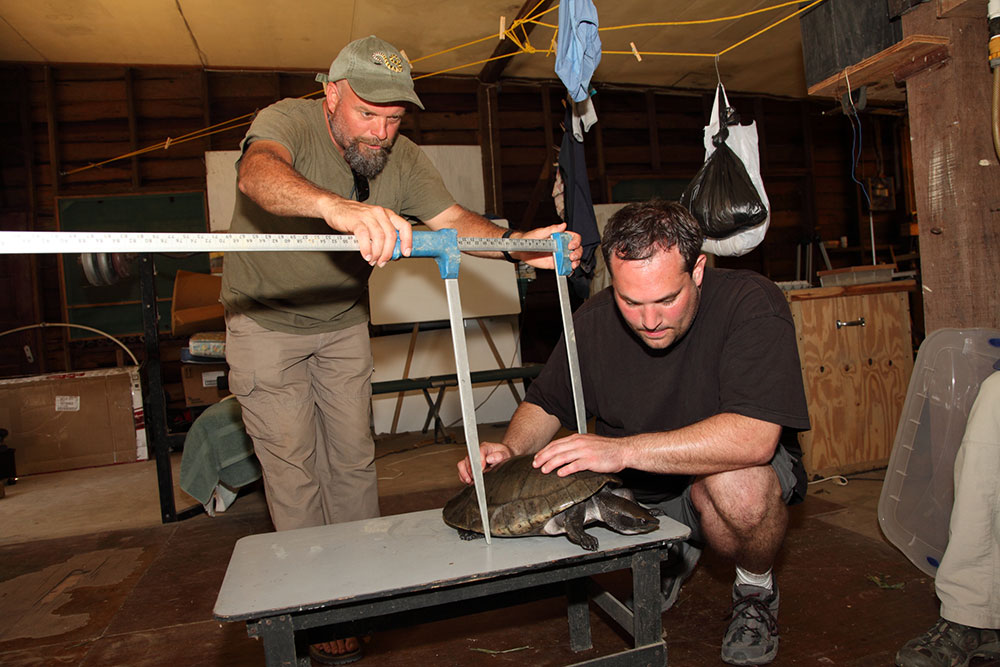
The goal of the HCRC is to develop reliable artificial breeding methods that will permit the sustainable and large-scale captive management of this endangered and heavily hunted species. Research at the Center is designed to answer questions on the reproductive biology of this secretive and difficult- to-observe turtle such as preferred nesting habitat, environmental triggers for egg-laying and breeding and egg incubation. Other goals include the design of optimal captive environments, and determination of stocking densities and low-cost feeding regimes that will contribute to sustained breeding success. The Belize Fisheries Department has enthusiastically endorsed the HCRC and will continue to help us stock the Center with future Hicatee confiscations. More illegal seizures are anticipated soon, in the days leading up to Easter celebrations, a peak period for consumption of Hicatee throughout their range.
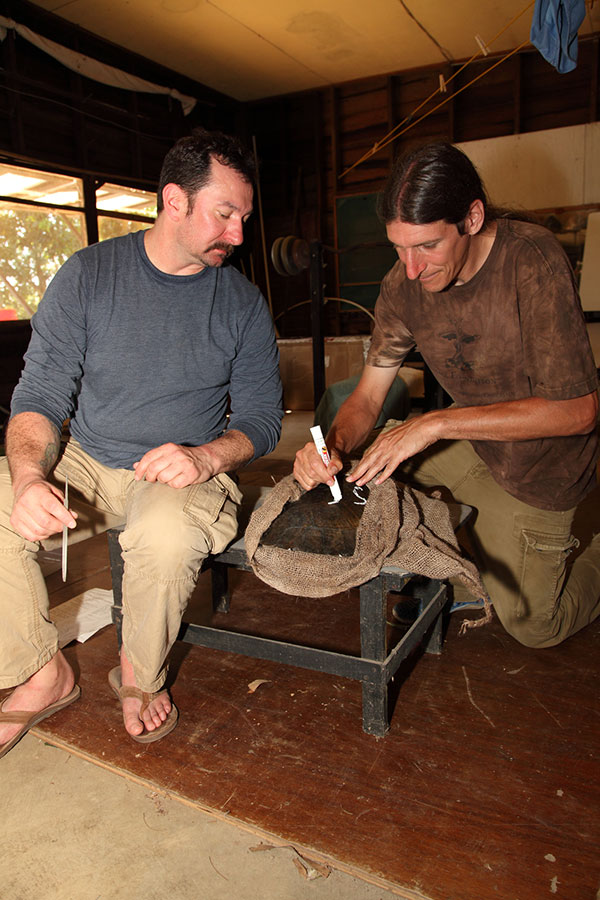 These confiscations – the first in a long time – bode well for the future of the Hicatee in Belize. The formation of the Hicatee Conservation Monitoring Network in 2010 is beginning to pay dividends and we are seeing increases in patrols, enforcement activity and community involvement. For the past three years a national awareness campaign – run by local NGOs YCT and TIDE – has highlighted the plight of the Hicatee and reminded people of protective regulations. Many groups and individuals are now coming together under a single banner and working to strengthen protection for this culturally important and iconic turtle.
These confiscations – the first in a long time – bode well for the future of the Hicatee in Belize. The formation of the Hicatee Conservation Monitoring Network in 2010 is beginning to pay dividends and we are seeing increases in patrols, enforcement activity and community involvement. For the past three years a national awareness campaign – run by local NGOs YCT and TIDE – has highlighted the plight of the Hicatee and reminded people of protective regulations. Many groups and individuals are now coming together under a single banner and working to strengthen protection for this culturally important and iconic turtle.
The TSA and BFREE wish to thank the following people and organizations for their recent contributions to the Hicatee conservation program in Belize: Milena Oliva Mendez, Venetia Briggs-Gonzales, Thomas Rainwater, Dustin Smith, Howard Goldstein, Lex Thomas, Tom Pop, Eric Anderson, Rich Zerelli, Curtis Flowers, Richard and Carol Foster, Marcelino Pop, Fernandes Sho, Alfio Cal, Domingo Pop, Cheers Restaurant, Monkey Bay Wildlife Sanctuary, Lamanai Field Research Center, Zoo Miami, Belize Aquaculture Limited, Gomez and Sons Sawmill, Maya King Limited, and the Belize Fisheries Department.

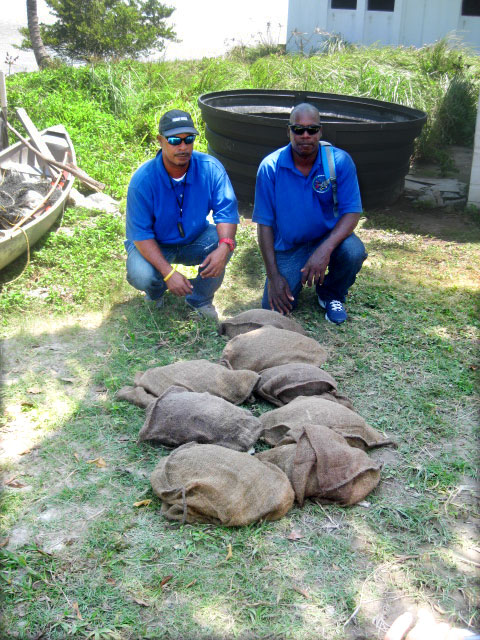
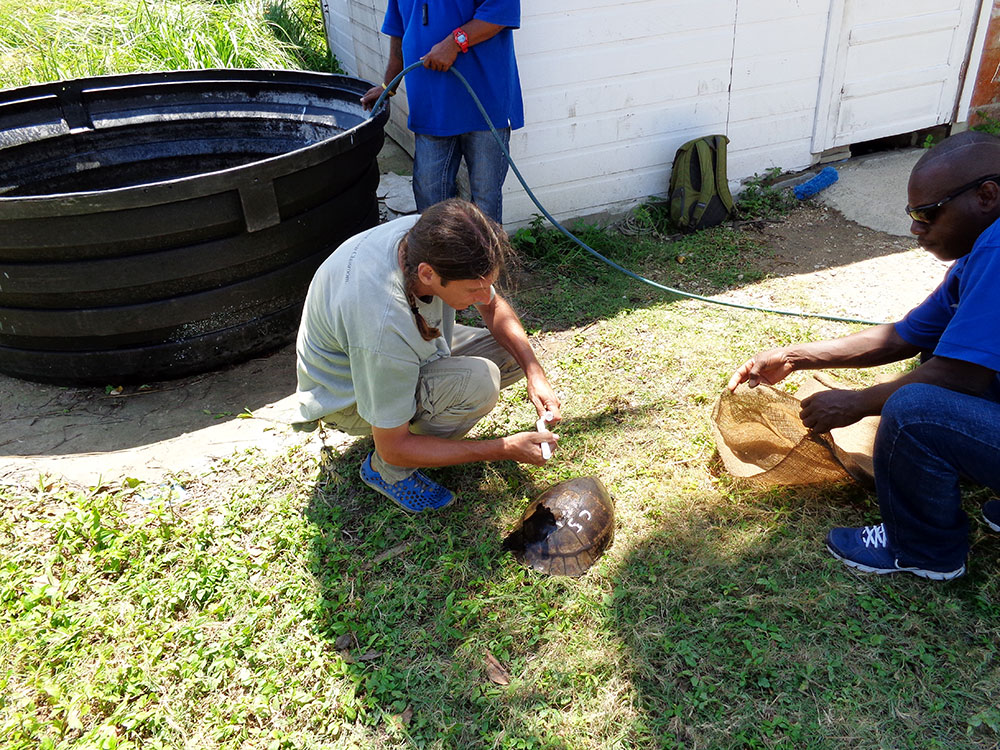
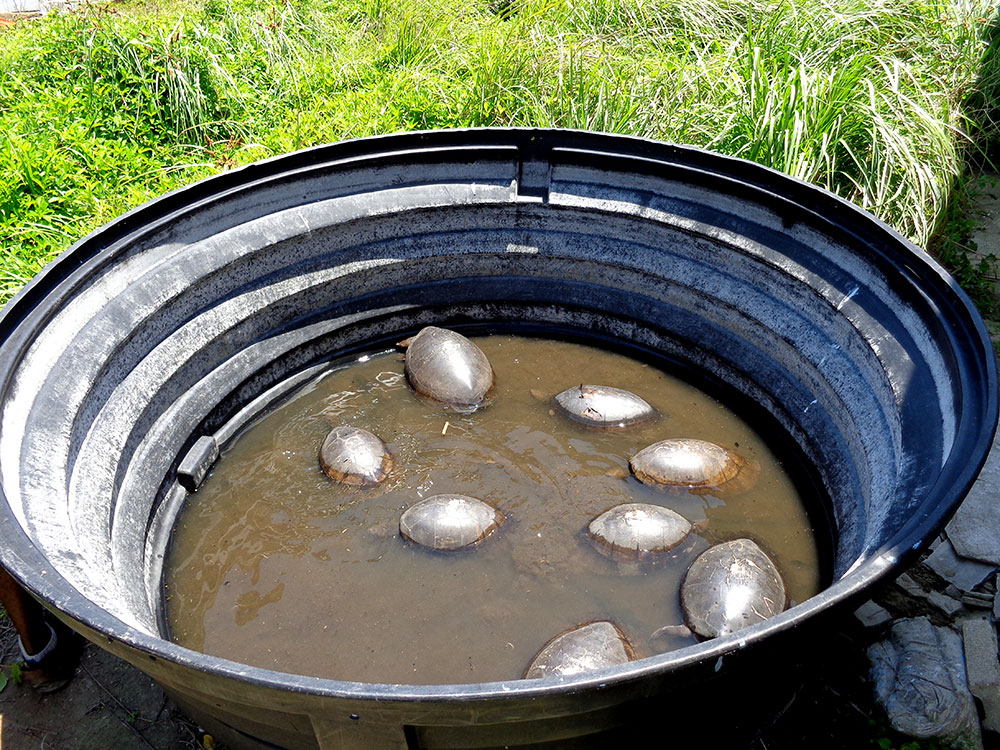
Leave a Reply
Want to join the discussion?Feel free to contribute!